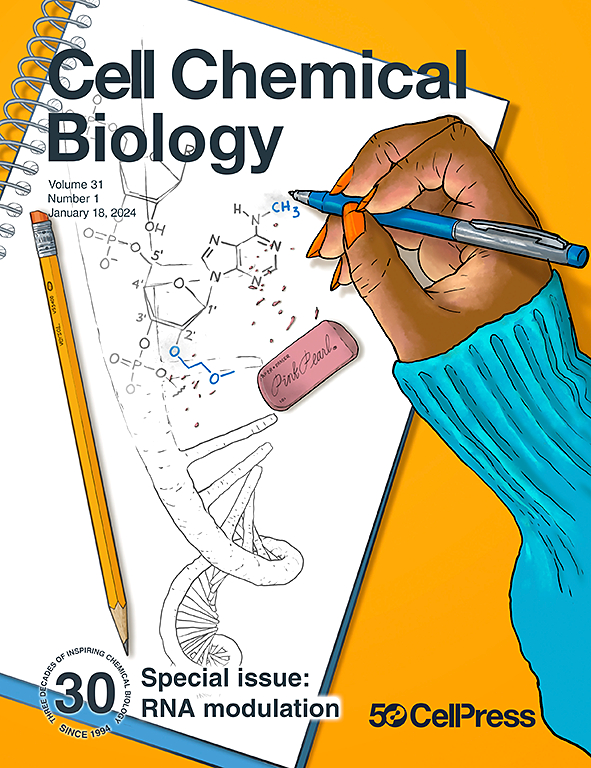Get your receptors in a knot with new Wnt signaling agonists
IF 6.6
1区 生物学
Q1 BIOCHEMISTRY & MOLECULAR BIOLOGY
引用次数: 0
Abstract
Pharmacological modulation of the Wnt/β-catenin signaling pathway holds promises for both basic research and therapeutic applications. In this issue of Cell Chemical Biology, Kschonsak et al.1 engineered knotted peptides that promote Wnt signaling by targeting ZNRF3 and serve as pharmacological tools for studying Wnt biology and supporting organoid growth.
新型 Wnt 信号激动剂让您的感受器打结
对 Wnt/β-catenin 信号通路的药理调控为基础研究和治疗应用带来了希望。在本期《细胞化学生物学》(Cell Chemical Biology)杂志上,Kschonsak 等人1 设计了结肽,通过靶向 ZNRF3 促进 Wnt 信号转导,可作为研究 Wnt 生物学和支持类器官生长的药理学工具。
本文章由计算机程序翻译,如有差异,请以英文原文为准。
求助全文
约1分钟内获得全文
求助全文
来源期刊

Cell Chemical Biology
Biochemistry, Genetics and Molecular Biology-Molecular Medicine
CiteScore
14.70
自引率
2.30%
发文量
143
期刊介绍:
Cell Chemical Biology, a Cell Press journal established in 1994 as Chemistry & Biology, focuses on publishing crucial advances in chemical biology research with broad appeal to our diverse community, spanning basic scientists to clinicians. Pioneering investigations at the chemistry-biology interface, the journal fosters collaboration between these disciplines. We encourage submissions providing significant conceptual advancements of broad interest across chemical, biological, clinical, and related fields. Particularly sought are articles utilizing chemical tools to perturb, visualize, and measure biological systems, offering unique insights into molecular mechanisms, disease biology, and therapeutics.
 求助内容:
求助内容: 应助结果提醒方式:
应助结果提醒方式:


